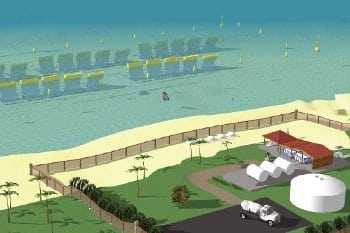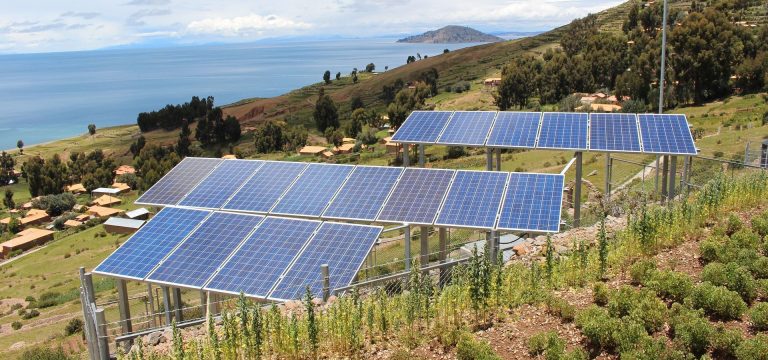This innovation is one of our Promising Prototypes of IEEE’s Global Humanitarian Technology Conference in Seattle Oct. 30 – Nov 1. For more in the series, please see below.
Water shortages are striking worldwide and with rising populations, deforestation and climate change, more probably loom in the near future. For coastal communities, water desalination is an attractive solution. Large-scale desalination, however, can be an energy hog.
To separate salt from water molecules, the water must convert to steam through boiling or evaporation, or it can be forced through a semi-permeable membrane in reverse osmosis. The first first method requires heat, the second requires pressure. The energy needed accounts for as much as 50-80% of the cost of desalination, according to the Boston Mass.-based energy development firm Resolute Marine Energy, Inc.
RME is testing two wave-powered energy converters, one of which could power a desalination plant. In one design, a tethered buoy tugs on its cords with the surging waves to drive a rotary permanent magnet electricity generator.
The other dsign, featured at the Global Humanitarian Technology Conference, is an immense paddle on a hinge anchored to the ocean floor. In the paddle system, arrays positioned with their broad sides in the current sway back and forth and convert the wave’s mechanical energy into either electricity or pressure. The paddles can pump seawater to a near-shore desalination plant and pressurize it enough to force freshwater through a membrane.
Eshwan Ramudu, who led a study for RME, figures that an array of 25 paddles could make nearly 240 million gallons (.9 million m3) of freshwater per year, enough for up to 30,000 people.
RME plans to field test its wave-powered desalination plant for the first time off the coast of a South African community in 2013. In lab tests, the paddles have converted about 40% of the wave energy and desalinate water at about a third of the cost that diesel generators can. At that rate of savings, paying off the plant should take about 3.5 years, Ramudu says. Also, by replacing fossil fuels, he calculates that RME’s plants can offset 104,000 tons of carbon dioxide per year.
More Promising Prototypes at GHTC:
Solar-powered antenna for off-grid communications
The Wound Pump can triple patients’ healing rate

